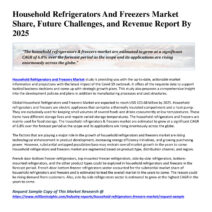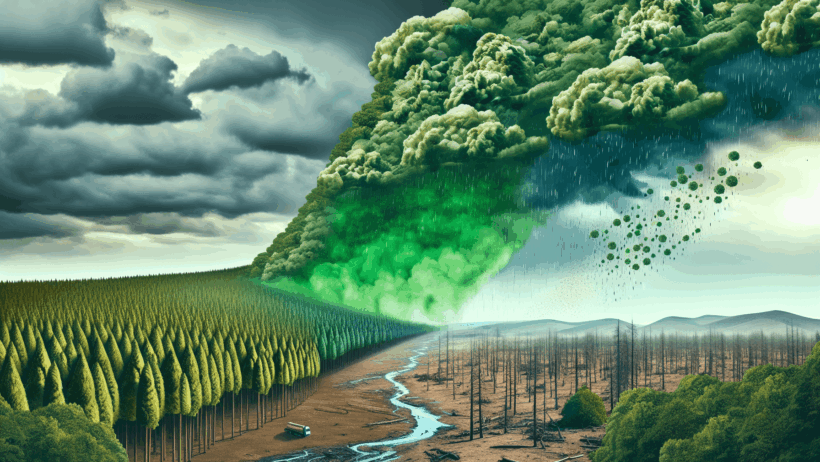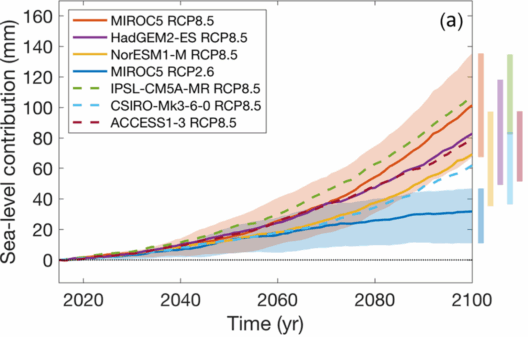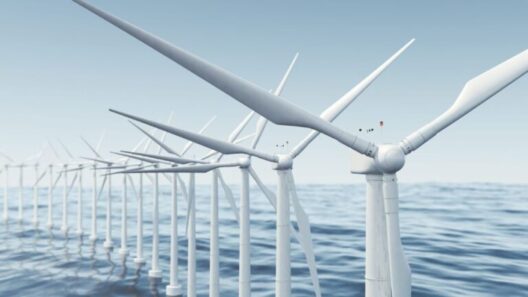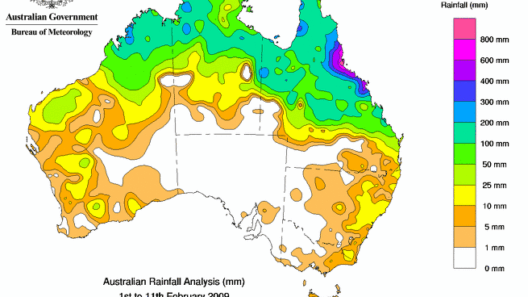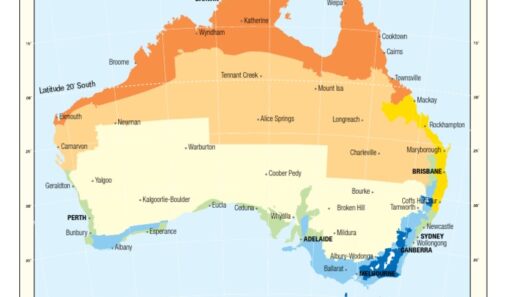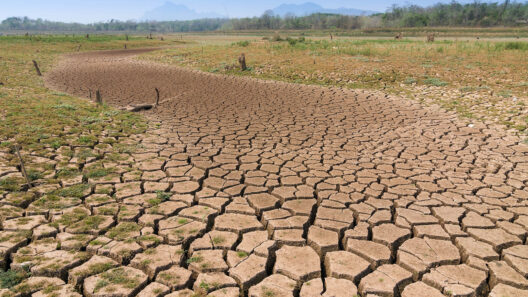Deforestation is often perceived merely as the removal of trees; however, its ramifications stretch far deeper into the fabric of our ecosystem and climate system than one might initially consider. The profound relationship between deforestation and climate change is an intricate one, only now being appreciated fully as scientists and environmentalists elucidate the multiplicity of causal links. This exploration aims to unravel how deforestation contributes to climate change, illuminating the layers of interaction between forest ecosystems and our global climate.
Understanding the Carbon Cycle: The Forests’ Critical Role
Forests play a pivotal role in regulating the global carbon cycle—a vital process through which carbon is exchanged among the atmosphere, land, and oceans. Trees act as carbon sinks, sequestering atmospheric carbon dioxide (CO2) through photosynthesis. They absorb CO2, utilize it to create biomass, and release oxygen back into the atmosphere. The sheer volume of carbon that forests sequester is staggering; tropical rainforests alone are estimated to store around 25% of the world’s terrestrial carbon.
When deforestation occurs, this delicate balance is disrupted. Not only are the trees removed, vast quantities of stored carbon are released back into the atmosphere as CO2 when wood is logged, burned, or left to decompose. This surge of CO2 exacerbates the greenhouse effect, as increased concentrations of this potent greenhouse gas trap more heat in the Earth’s atmosphere, leading to global warming. The implications of this disturbance extend beyond local contexts, influencing weather patterns, sea levels, and ecosystems on a planetary scale.
The Loss of Biodiversity: A Devastating Cascade
One of the oft-overlooked consequences of deforestation is the significant loss of biodiversity. Forests are home to an extraordinary array of species—more than 80% of terrestrial biodiversity exists within these ecosystems. The destruction of forest habitats leads to the extinction of numerous flora and fauna, thereby unraveling the intricate web of life that sustains ecological balance.
This reduction in biodiversity not only affects wildlife but also diminishes the resilience of ecosystems to adapt to environmental changes. Diverse ecosystems are better equipped to absorb shocks, resist diseases, and recover from disturbances, maintaining their vital functions. However, as species disappear, these systems weaken. This loss has direct repercussions on climate stability, as fewer species mean fewer ecological interactions that are critical for regulating carbon storage, water cycles, and soil fertility.
Deforestation and Soil Degradation: Unseen Consequences
The relationship between deforestation and soil health is another crucial aspect that compounds climate change effects. Trees and plants play a significant role in preventing soil erosion. Their root systems stabilize the soil, which is vital for maintaining land integrity and fertility. When deforestation occurs, the exposed soil becomes vulnerable to erosion from wind and water. This process not only leads to the loss of topsoil but also to the degradation of essential nutrients, rendering the land barren over time.
Moreover, eroded soil can be washed into waterways, leading to sedimentation that deteriorates aquatic ecosystems. As rivers and lakes become silted, their ability to support aquatic life diminishes, further destabilizing local environments. This chain reaction ultimately contributes to climate change; degraded lands emit more greenhouse gases while being less capable of sequestering carbon effectively.
Economic Incentives Driving Deforestation
Despite the environmental repercussions of deforestation, economic incentives often drive this practice. Agriculture, logging, and mining industries considerably contribute to local and national economies. Deforestation is often rationalized as necessary for economic development, particularly in developing countries where alternative revenue streams may be limited.
However, this short-term gain perpetuates a cycle of environmental degradation that poses substantial long-term risks. Unsustainable practices lead to a decrease in forested areas, directly impacting the livelihoods of communities reliant on forest resources. Climate change further exacerbates these socioeconomic vulnerabilities, affecting agricultural productivity and increasing the frequency of climate-related disasters, thereby trapping communities in a cycle of poverty and environmental collapse.
Addressing the Deforestation Crisis: Pathways to Sustainability
To mitigate the impacts of deforestation on climate change, it is imperative to adopt sustainable land-use practices. Reforestation and afforestation efforts can play a crucial role in restoring degraded lands and enhancing carbon sequestration capabilities. Implementing agroforestry systems—where trees are integrated into agricultural practices—can simultaneously bolster food security and protect forest ecosystems.
Additionally, policies that promote sustainable forest management and incentivize conservation are essential. These efforts can help balance economic development and environmental protection, establishing a framework for sustainable interaction with nature. Funding for conservation initiatives and increased awareness of the importance of forests in combating climate change can foster a global ethos of stewardship toward these irreplaceable ecosystems.
In conclusion, the connection between deforestation and climate change is multifaceted and profound. Addressing this crisis requires not only a commitment to preserving forests but an acknowledgment of their intrinsic value to our planet’s health. Recognizing that every tree lost is not merely an environmental loss but a setback in our fight against climate change underscores the urgency of taking collective action to safeguard our planet.
